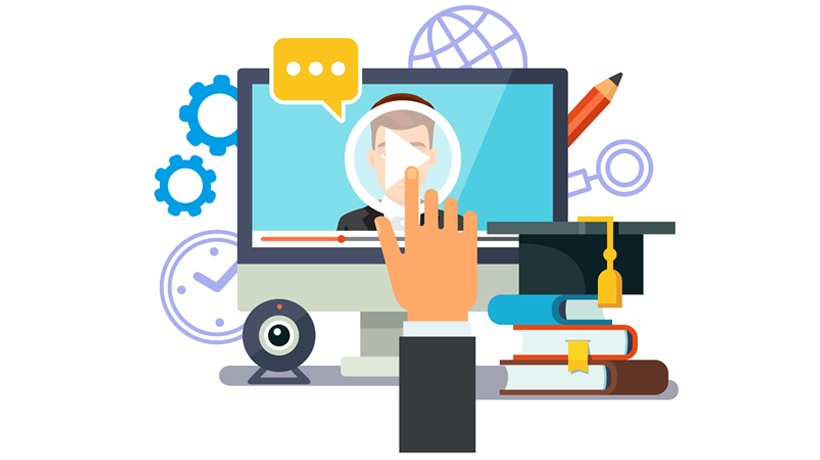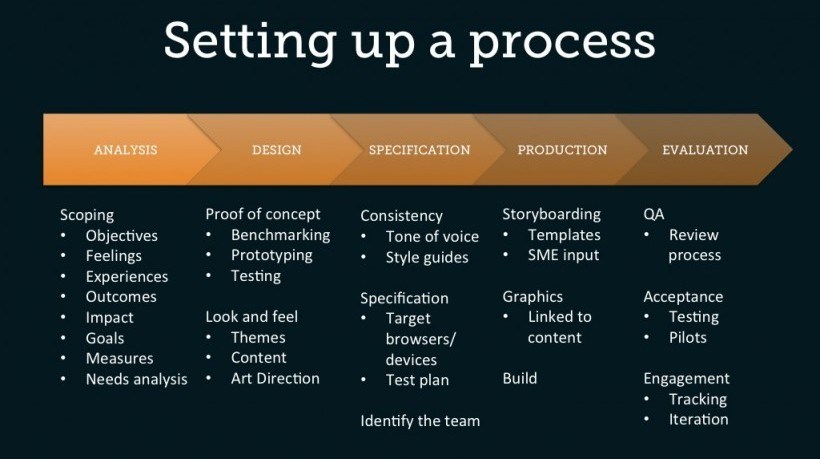How To Deal With Problems Affecting Your eLearning Production And Delivery
Many learning teams wonder why they aren't receiving the results they want. Maybe they're having trouble attracting learners. Maybe learners are reporting problems with the material. Maybe test results show that learners aren't retaining the information you're providing. And maybe you're seeing that learners aren't coming back to the course, or they aren't seeking out subsequent offerings. Learning teams run into 3 main problems with their offerings. Fixing these problems that hold back your eLearning production involves creating a responsive and iterative eLearning development process. When you're able to adapt your eLearning to meet your learners' needs better, they're more likely to get more out of the experience and keep coming back.
1. Poor Team Communication
Many teams design their offerings by working alongside colleagues and Subject Matter Experts (SMEs) knowledgeable in the field. Often, the people working on the project have highly compartmentalized goals. For instance, the team might understand the course outcome, but not necessarily the information he or she wishes to convey or how to convey it. You may have designers who know how to create the look and feel of the materials but not what they should contain. Your Subject Matter Experts may know the material they need to share, but they may not have the technical know-how to share it themselves. When communication breaks down among these groups, the result is an incoherent eLearning course at best - and a delayed or aborted project at worst.
Part of the problem is that much of the communication media we use is outdated and isn’t very useful for the task. Email and static mock-ups, for instance, might be great for planning the project’s early phases. But as you plan training videos or presentations, it becomes more difficult to plan, alter, and offer feedback with email and mock-ups. You need to seek communication tools that better matches your process.
2. No Feedback From Learners
You may have what you think is a great eLearning product, but what really matters is what the end user -the learner- perceives. If your learners are habitually having trouble with the course materials, it doesn't matter if you made them with loving care - something is wrong, whether it's in the material or its presentation.
That's why it's important to get feedback from your learners at various points during the course. By continuously gauging learners' understanding of the material and their opinions of the course, you'll understand if you're losing your audience, as well as when and why. You'll be able to look at your eLearning with a critical eye and figure out how to adjust it - to make it more engaging, simpler, and so forth.
3. Inflexible Course Offerings
Let's say you've consulted with your learners, and you've determined that they're having problems with a particular lesson. Maybe the lesson doesn’t explain the course material well enough. So you go in and change it.
But that may be easier to say than to do. Imagine, for instance, that you present your concepts through a series of 15-minute video lectures. To improve this material, you have to rewrite the script, re-record one lesson's video, and create a final product with the same look and feel as the other videos in the series.
That may be as simple as rewriting the script and re-taping the video, or it may be an eLearning production nightmare. It all depends on how invested you are in creating an iterative process that responds to your learners’ feedback. If you go in with the assumption that your course materials will need to change with your learners, you're more likely to be ready to change when it's necessary. These changes aren't some kind of clumsy add-on to your materials: They're the heart of the eLearning process.
Related: Check out Elucidat’s Rapid Release technology that let’s you make and publish changes instantly without needing to re-upload via your Learning Management System.
Final Thoughts
Your job as a learning professional is to tailor your material to your learners. By virtue of the way eLearning works, it can sometimes be hard to match your materials to your learners or gauge comprehension at a distance.
This is why accepting feedback and creating an iterative eLearning production process are essential to creating good eLearning materials. Producing top-quality eLearning material can be a massive investment of time and money across a large project team, and it can be tempting to rest on your laurels. Because in actuality, that's where the real work of creating successful eLearning material begins.
By figuring out how to keep your learning team in touch through various phases of the project, you'll work more efficiently while creating the initial offerings and adapting them. By figuring out ways to assess your learners' understanding and course satisfaction accurately, you'll determine where your current course materials are falling down. And by adapting your course offerings to your learners' needs as they arise, you'll be able to fine-tune your products and eliminate future problems.
By embracing an iterative, responsive design process, you'll see better comprehension, greater success, and better retention. You'll see better responses from learners, instructors, and clients, and you'll see your enrollment rates skyrocket.
Next step: Learn exactly how to accelerate the production of high-quality eLearning in our guide.









